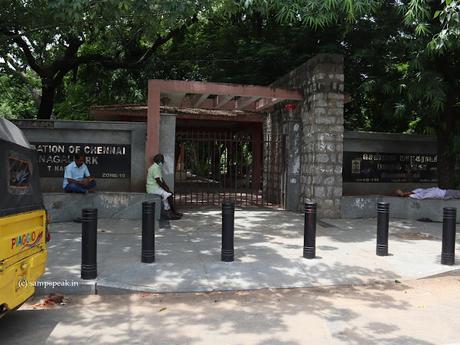Statues are made after great persons – but what do they serve - decline and deterioration is but inevitable and at some point of time, none would even recognize!
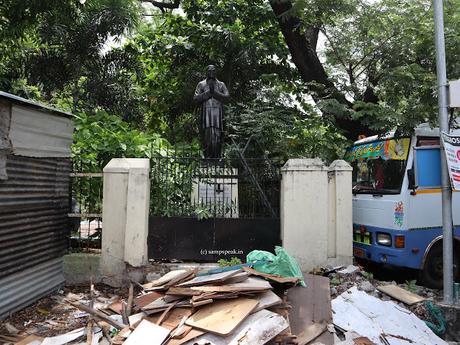 If you are a music aficionadoyou for sure would have attended a concert at
this heritage hall – “Vani Mahal” – in GN Chetty Street, which stands pristine
now renovated.Vanimahal houses the 'Kanchi Jagadguru Sri
Chandrasekarendra Saraswathi Mahaswami auditorium' and the 'Sri P. Obul Reddy
Hall'.
If you are a music aficionadoyou for sure would have attended a concert at
this heritage hall – “Vani Mahal” – in GN Chetty Street, which stands pristine
now renovated.Vanimahal houses the 'Kanchi Jagadguru Sri
Chandrasekarendra Saraswathi Mahaswami auditorium' and the 'Sri P. Obul Reddy
Hall'.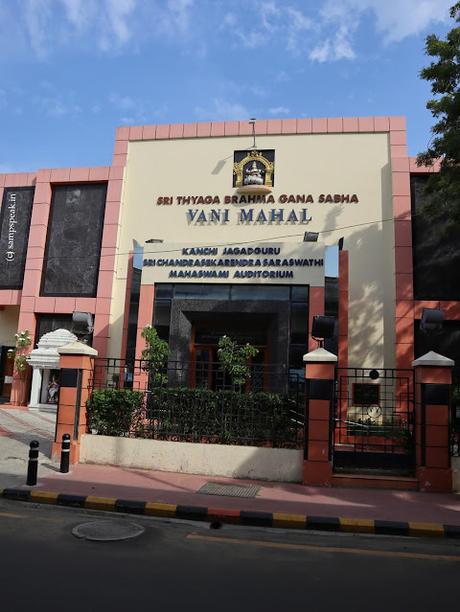
It was a photo posted by historian, knowledge bank Kathik Bhatt on FB that started a search trail. He had posted a photo of Elephants at Madras Zoo taken by Ellis R Dungan.
Ellis Roderick Dungan (1909 – 2001) was a famous name in Tamil cinema, an American film director, who worked predominantly in Tamil cinema, from 1936 to 1950. He was an alumnus of the University of Southern California and moved to India in 1935. During his film career in South India, Dungan directed the debut films of several popular Tamil film actors, such as MGR in Sathi Leelavathi, T. S. Balaiya, Kali N.Ratnam and N. S. Krishnan. Besides Tamil hits, he did “Meera” in Hindi too. Dungan, reportedly had no knowledge of Indian languages, a problem which never affected his career as a director of films in Indian languages, especially Tamil. He introduced many new techniques to Indian cinema despite the technical limitations of that period.
“Meera” – the story of devout Meera was made in 1945, a musical drama film directed by Ellis R. Dungan, produced by T. Sadasivam and written by Kalki Krishnamurthy. The film starred the great Carnatic singer MS Subbulakshmi as the eponymous 16th century mystic and poet, a zealous devotee of Krishna. The role of Mewar King Rana was done by an actor by name Chittor Nagaiah, who still stands forlorn in busy part of Chennai with tens of thousands of people crossing him daily. – do you know where ? – though most likely that you would have walked or rode nearer !!
Sadasivam wanted to produce a film that would take his singer wife Subbulakshmi's music to greater heights and reach even the common man – the story of ‘Meera’ was finalized and production started at Newtone Studio in Madras, but was predominantly filmed on location in North India in places like Jaipur, Vrindavan, Udaipur, Chittor and Dwarka to maintain credibility and historical accuracy. Meera was released on 3 November 1945, Diwali day. The film became a major critical and commercial success; this led to the creation of a Hindi-dubbed version, which had a few scenes reshot, that was released two years later and also achieved success. Despite the Hindi version making Subbulakshmi a national celebrity, it would be her last film as an actress, after which she decided to focus solely on her musical career.
The man chosen to play the Mewar King was Vuppaladadiyam Nagiah, better known as Chittoor V. Nagiah, a great celebrity of those years - called as the 'actor saint' was well liked as an avid performer, refined music composer, incomparable musician, vocalist, filmmaker and director. He was the first person who got the respect not only from the Telugu film industry as well as the Tamil film industry. He was extremely civilized and sympathetic towards his fellow beings. His life personified like an ocean current, which sprang up out of the blue and fell down instantly.
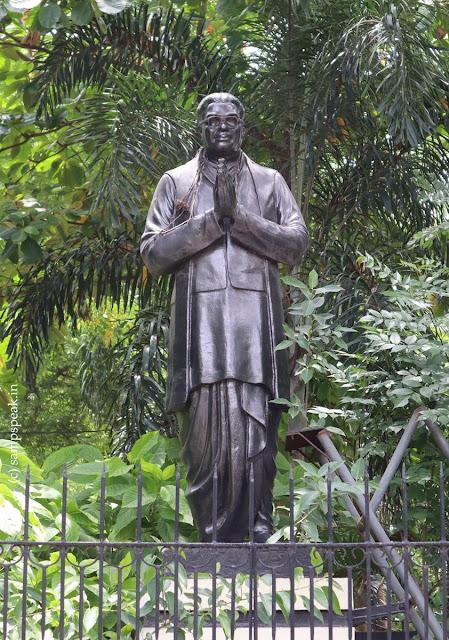
Nagiah was born in 1904 in a Telugu Brahmin family at Repalle in Guntur District to Sri Ramalinga Sarma and Smt.Venkata Lakshmamba. He studied with the help of scholarship provided by the Thirupathi Devasthanam during 1918. He couldn't extend for higher studies as he drew rather more interest in music and stage plays. He completed his B.A. Degree at Chittoor. He worked as a clerk in a local government office and as a news reporter for the new paper 'Andhra Patrika' in Chittoor for a short while but soon he found the was work would not suit him and dropped out. He was drawn to freedom struggle and took part in salt sathyagraha and was imprisoned for 18 months. He entered into an amateur theater in the company of R. B. Ramakrishna Raju – a political leader and a successful lawyer. Nagiah assisted the gramophone companies like Hutchins, Twin etc., as the domesticated musician. He brought down many assorted gramophone records just as Classical and light music and some of them were of the great legendary saint and musician, Thyagaraja Swami.
The actor whom feisty Baburao Patel, Editor of Mother India, once called “the Paul Muni of South India” reached greater heights. Muni, for those unfamiliar with the name, was the winner of the Best Actor Oscar in 1936 for his role in the film The Life of Louis Pasteur and considered one of the best character actors of his time; he had four other Best Actor nominations in the 25 films he made before deciding to stick to the stage. Nagayya (aka Nagaiah) was, from 1938 till the early 1950s, considered the best character actor in South Indian cinema. His was not a regular route though, as he sang for his livelihood — not to an audience, but for a gramophone record company. He became popular as a “gramophone plate artist”, moved from Chittoor to Bangalore — and then he decided to move again, to the capital of the Presidency, Madras, where all the action was. There, while acting in Chennaipuri Andhra Maha Sabha stage productions at the Victoria Public Hall, he was spotted by Bommireddi Narasimha Reddi, for movie ‘Grihalakshmi’. Nagayya followed B.N. Reddi to his new venture, Vauhini Pictures, and scored in its first film, Vande Mataram.There followed success after success in Telugu films. Nagayya was to act in 137 of them. It was to be 1941 before he made a Tamil film, playing the part of the Emperor Ashoka in the film Ashok Kumar, starring Thyagaraja Bhagavathar and Pasupuleti Kannamba. He was to make 92 more Tamil films, besides eight each in Kannada and Hindi. One of those Tamil films was the immortal Meera, starring M.S. Subbulakshmi and directed by Ellis Dungan.
Thyagaiah 1946 film, considered as masterpiece, was produced and directed by Chittor V. Nagaiah – he acted in the lead role, wrote story and screenplay and scored music for the musical hit that had 37 songs too. It is a soul-stirring film about the truly extraordinary life of Saint Thyagaraja. Those who recall his works, put his two best films to be Thyagaiah (Telugu) and Ézhai Padum Paadu (Tamil), based on Victor Hugo's Les Miserablés. As Thyagaraja the saintly composer in the former and a Tamil Jean Valjean in the latter he turned in performances described as “classic”, justifying Baburao Patel's assessment of him nearly a decade earlier. But for all his success, his last years were hard ones, financially, his open house policy and generosity contributing no little to this. Being awarded the Padma Shri — the first South Indian star to be so recognised — was of no help. He passed away in Madras on 30th December 1973 at the age of 72. He went out of reckoning .. .. however, some of his old friends struggled to erect a statue of Nagaiah at Panagal Park, T. Nagar - where he lived most of his life.
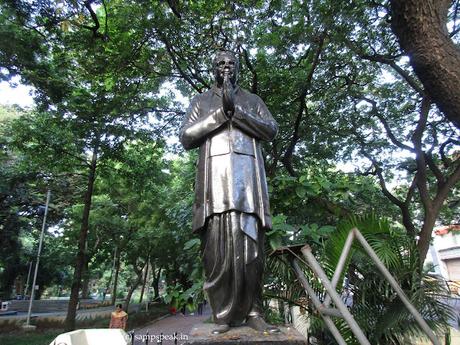
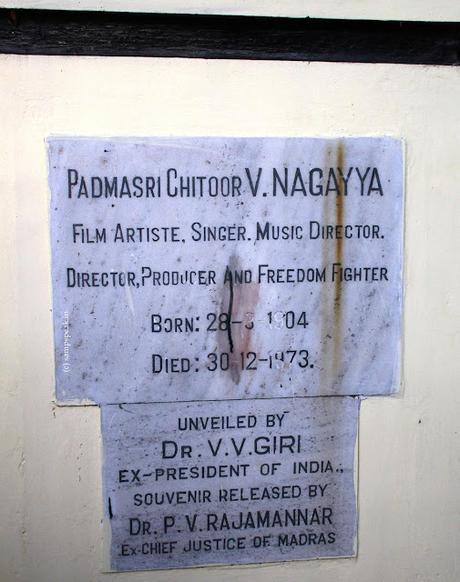
It is stated that Chittoor V. Nagaiah several decades ago felt the need for an organisation (sabha) to conduct classical music concerts for the benefit of the residents of T. Nagar and its surroundings when one evening, and was instrumental in founding Sri Thyaga Brahma Gana Sabha alongwith some friends. This sabha now stands majestically in GN Chetty road, famously known as ‘Vani Mahal’ providing opportunities of many artistes of Art and Culture.
.. .. ….may be next time you go shopping for Gold in T Nagar, or silk in Nallis, Kumaran, Pothys or buy at Legend Saravana, do walk around Panagal park to see his statue standing forlorn ! ~ that is a grim reminder of life.
With regards – S.Sampathkumar18th Aug 2021.
